Tom's Guide Verdict
Huawei's triple-camera marvel takes stunning low-light shots, but it’s not quite a replacement for the Galaxy S9 or iPhone X overall.
Pros
- +
14-hour battery life
- +
Amazing low-light performance
- +
Android 8.1 Oreo
- +
Great performance
- +
Eye-catching design
Cons
- -
No U.S. availability
- -
Expensive
- -
AI camera filters hit or miss
Why you can trust Tom's Guide
One look at Huawei's latest flagship, with its trio of Leica-branded cameras and optional color-shifting purple finish, and a serious case of FOMO sets in. The P20 Pro won't even be offered in the United States, but the phone has still captivated worldwide interest, precisely for its quirks.
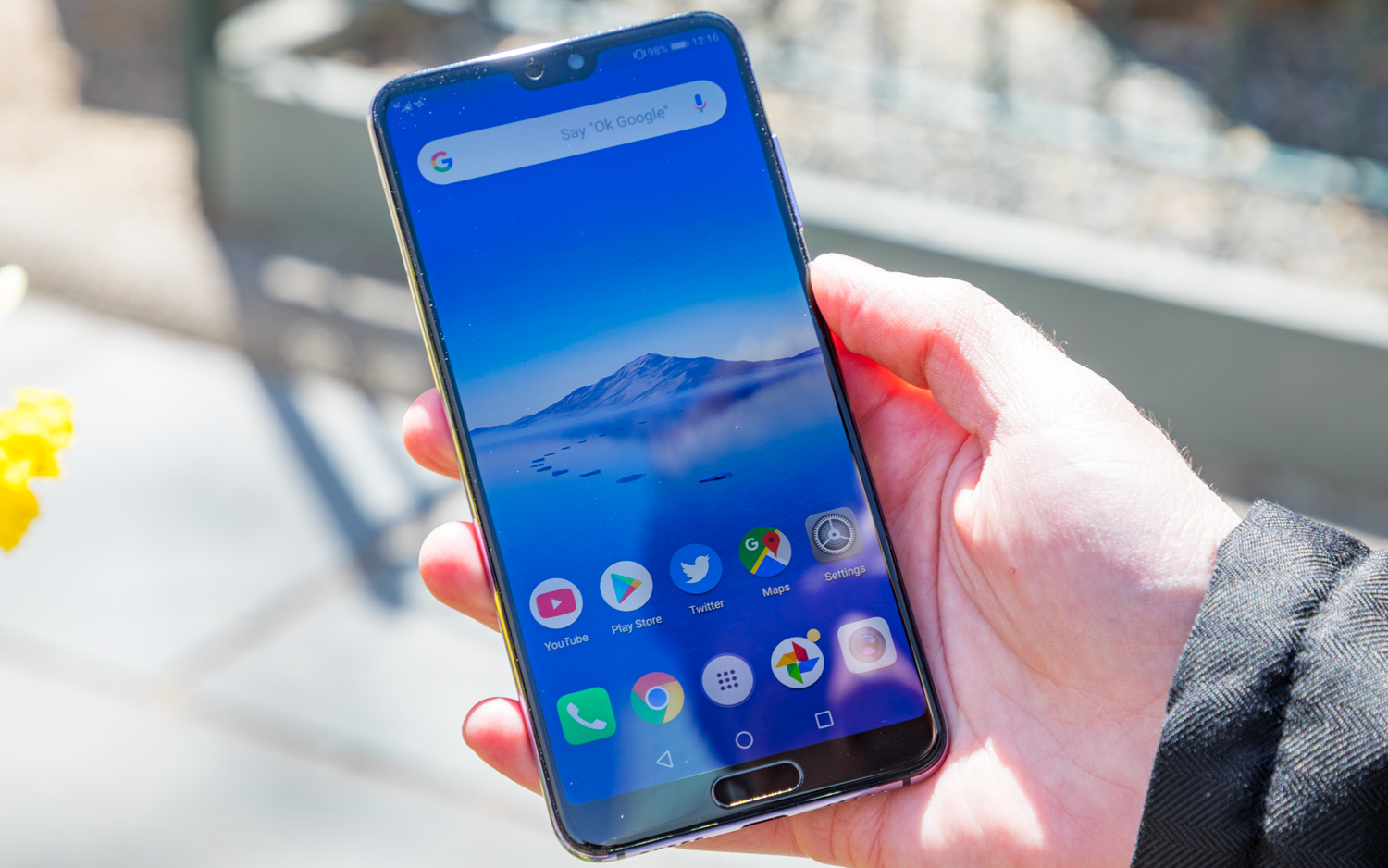
It's a far cry from Huawei’s last high-end handset, the Mate 10 Pro — which strangely enough is sold here, but has struggled to get noticed by American consumers, due to a combination of geopolitical distrust and a lack of truly distinctive features.
But standing out isn't a problem for the P20 Pro. Unlike the Mate line, which Huawei aims squarely at business types, Huawei's P-series flagships are designed for creatives. And that focus shows: the P20 Pro is more fun: to look at, to show off to your friends and to use — especially when snapping memories of a night on the town.
The P20 Pro isn't perfect, but it is a step forward for the globe's No. 3 smartphone maker, and the device it should have relied upon to boost its U.S. profile.
Update (Aug. 31): Huawei has introduced new colors and configurations for the P20 and P20 Pro. More information is provided in the Price and Availability section.
Price and Availability
The 6.1-inch P20 Pro and its smaller, dual-camera-toting sibling, the P20, are offered in most markets around the world — including Canada — but will miss the U.S. entirely.
In Europe, the P20 Pro retails for 899 euros, while U.K. customers have to pony up 799 pounds (compared to 659 euros and 599 pounds for the smaller P20). That translates to about $1,110, which makes the device nearly as expensive as the 256GB iPhone X. The P20 Pro originally released in four colors: Twilight (pictured in this review), Champagne Gold, Pink Gold and Midnight Blue.
Get instant access to breaking news, the hottest reviews, great deals and helpful tips.
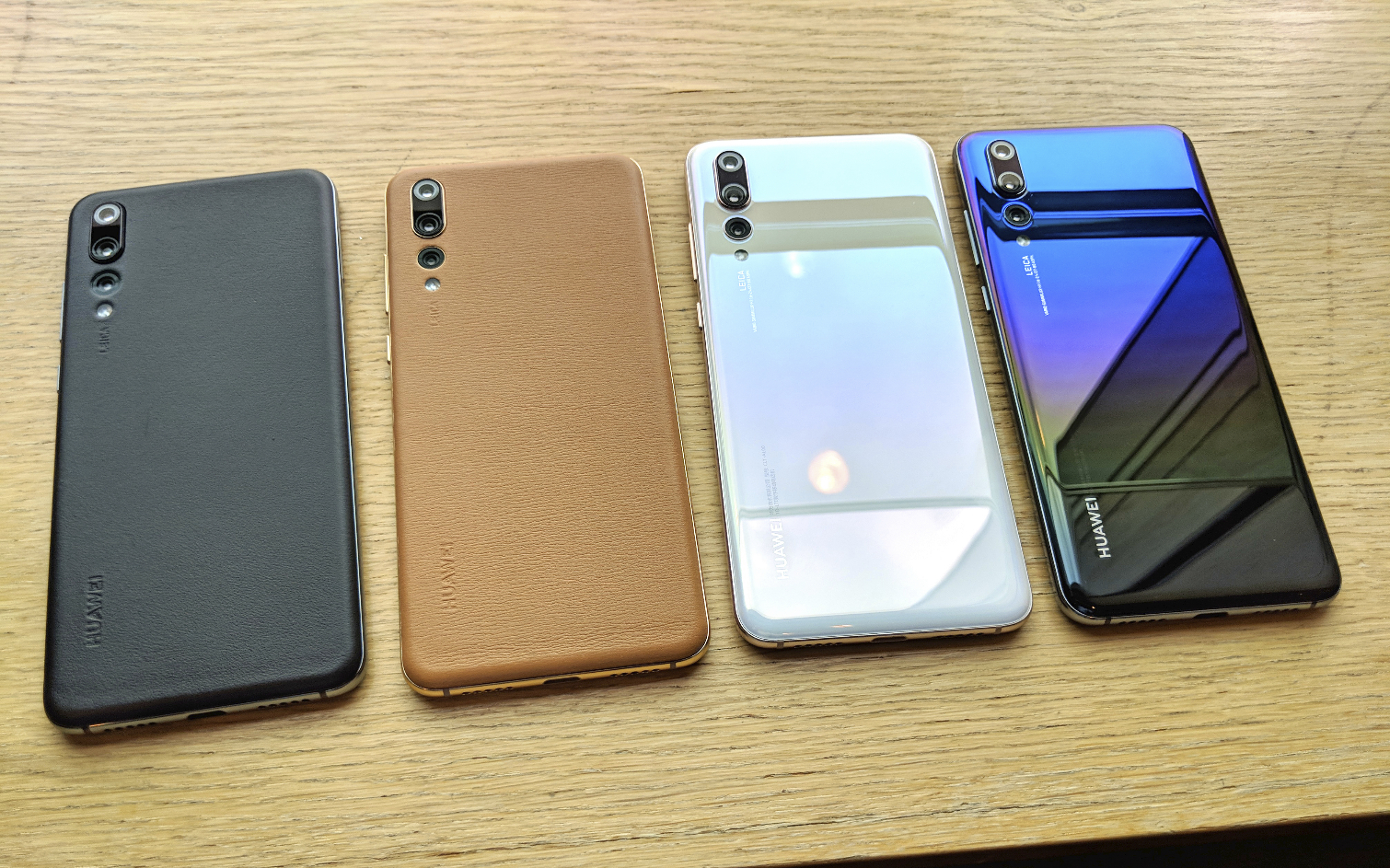
Following Berlin's IFA conference in August, Huawei introduced another four colorways (pictured above): Morpha Aurora (reminiscent of Twlight, but with a rainbow effect), Pearl White, and two leather-clad shades. The brown leather variant carries gold trim, while the black leather is partnered with silver. Both of the leather phones come with 8GB of RAM and 256GB of storage, though pricing has not yet been revealed.
However, there is a glimmer of hope for stateside consumers. Unlocked models of the P20 Pro sold across Europe and Canada still support GSM carriers in the U.S., such as T-Mobile and AT&T. While foreign phones are never guaranteed to work on networks other than those for which they were designed, our P20 Pro (model CLT-L29) ran about as well as any other device we've tested with a T-Mobile SIM on-board. Users in rural areas, however, may encounter more trouble securing a stable connection. If you're considering importing a P20 Pro, be sure to read our dedicated guide before taking the plunge.
Huawei P20 Pro Specs
| Price | 899 euros |
| OS | Android 8.1 Oreo with EMUI 8.1 |
| Screen Size (Resolution) | 6.1 inches (2224 x 1080) OLED |
| CPU | HiSilicon Kirin 970 |
| RAM | 6GB/8GB |
| Storage | 128GB/256GB |
| microSD Slot | No |
| Rear Camera | Triple: 40-MP f/1.8; 20-MP f/1.6 monochrome; 8-MP f/2.4 telephoto |
| Front Camera | 24 MP f/2.0 |
| Battery Size | 4,000 mAh |
| Battery Life (Hrs:Min) | 14:13 |
| Water Resistance | IP68 |
| Size | 6.10 x 2.91 x 0.31 inches |
Design: Pretty in purple
The notches are coming. Launched with the Essential Phone and popularized by the iPhone X, many of the flagship handsets set to drop during the back half of 2018 are either known or heavily rumored to have cameras and earpieces jutting into their displays. That includes the OnePlus 6, LG G7 ThinQ and Asus ZenFone 5Z — not to mention the successors to 2017's notched devices.
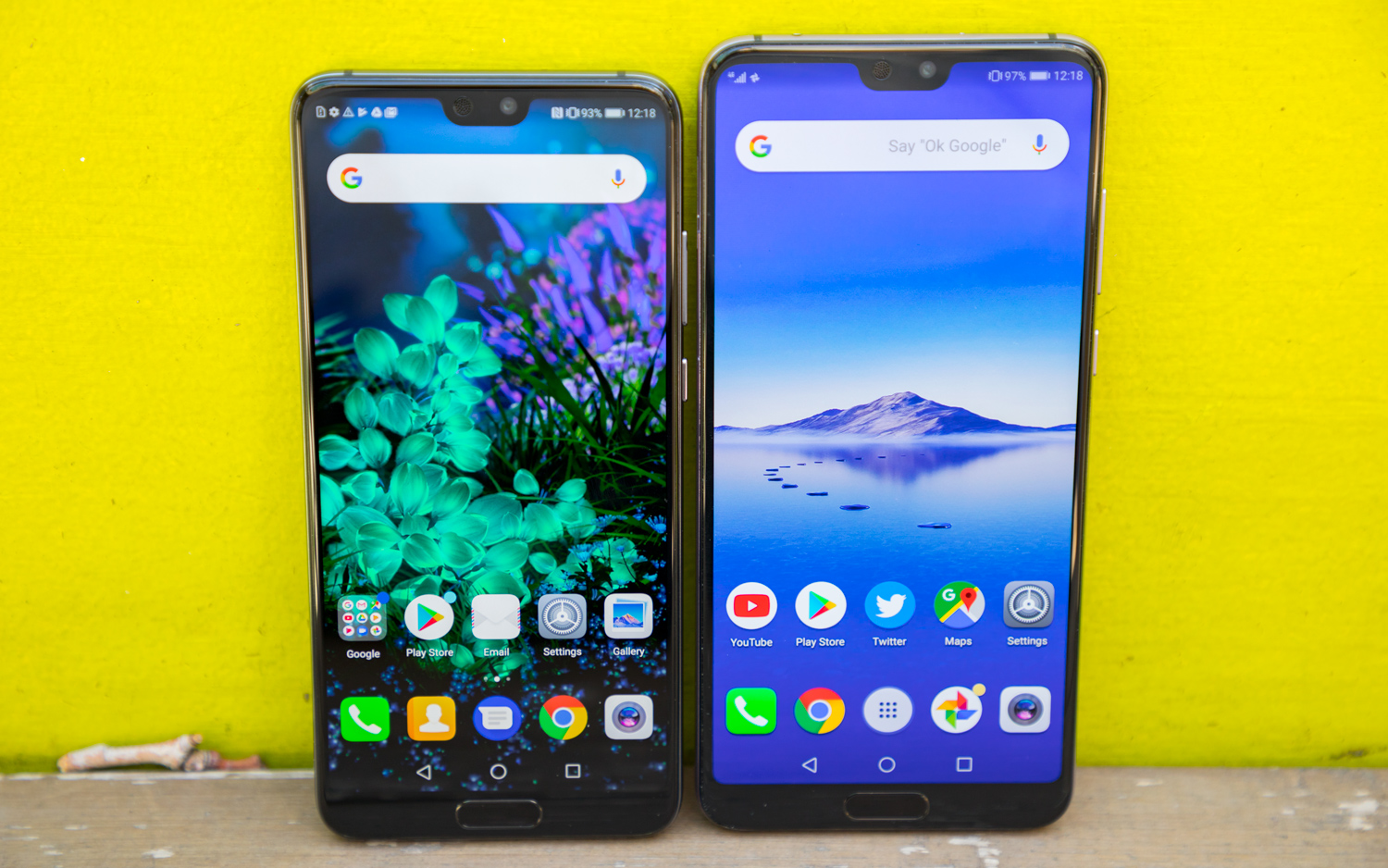
Count the P20 and P20 Pro among the notch-sporting crowd. Huawei's notch is one of the smaller ones we've seen to date, but it has still ruffled some feathers — which is precisely why the company includes an option to "disable" it. This setting conceals the spaces to the left and right of the dock in total darkness. However, these regions are still used to relay the time and notifications, which may actually look even stranger.
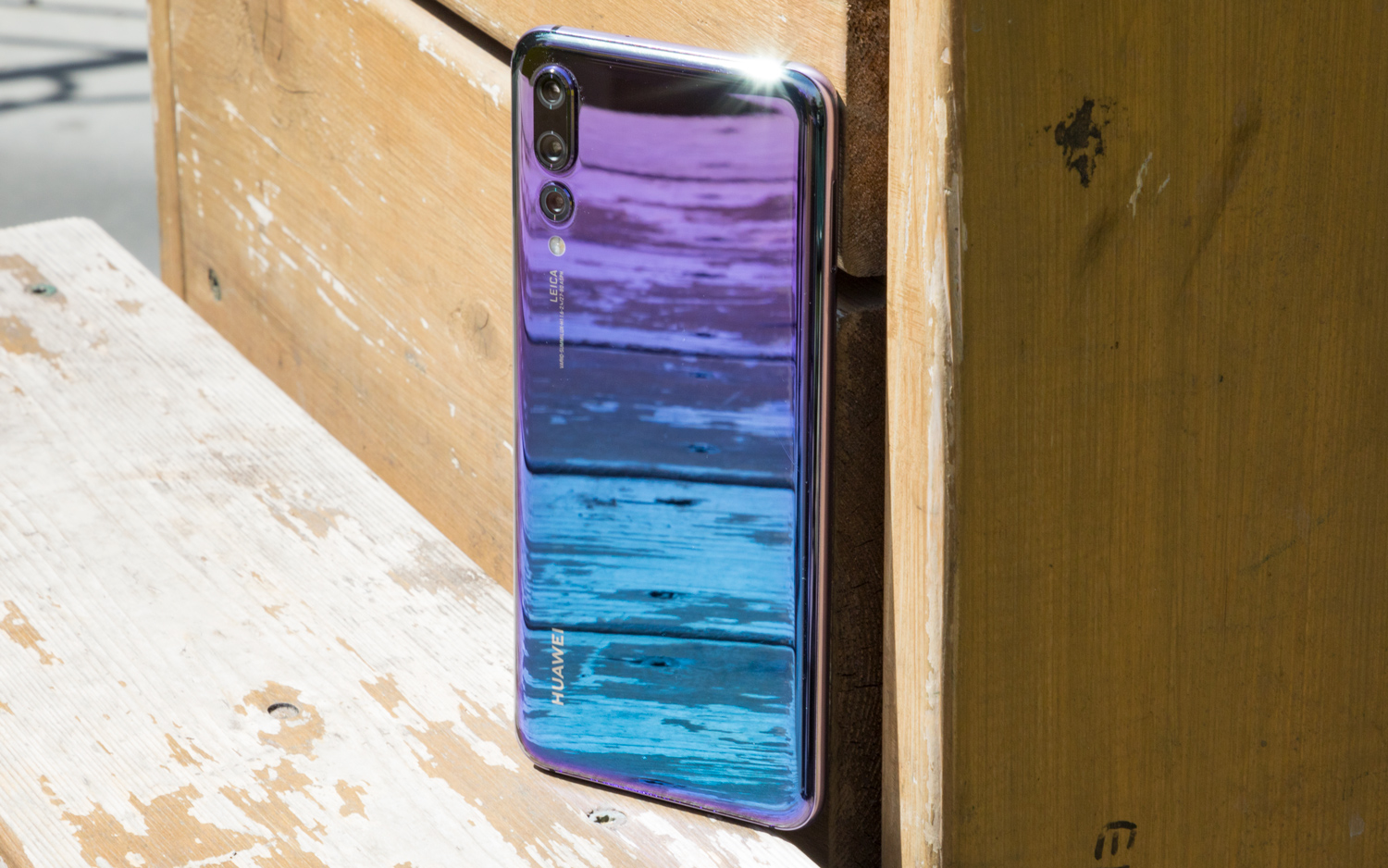
Then there's the P20 Pro's other party piece — that glass back, which comes in several different colorways, though only one really matters. Huawei is heavily promoting the Twilight blend of lavender and cyan in all the P20 Pro's marketing materials, and it's certainly worthy of the attention. Half of my colleagues fell in love with it (myself included), while the other half replied with a curt "that's too much." Your opinion will likely inform how you feel about the P20 Pro's other, more traditional flavors.
MORE: Best Smartphones on the Market Now
In any color, though, the P20 Pro's design isn't remarkable. We're dealing with the same materials here — glass enclosed by a chrome frame — that appear in so many other expensive handsets. It's also no less slippery or resistant to scratches. Our unit, which was never dropped, almost immediately took a nasty slash opposite the Leica logo, with a couple more scuffs near the bottom edge, along the curve that melds into the frame. What good is that gorgeous Twilight back if you have to keep it all covered up with a case?
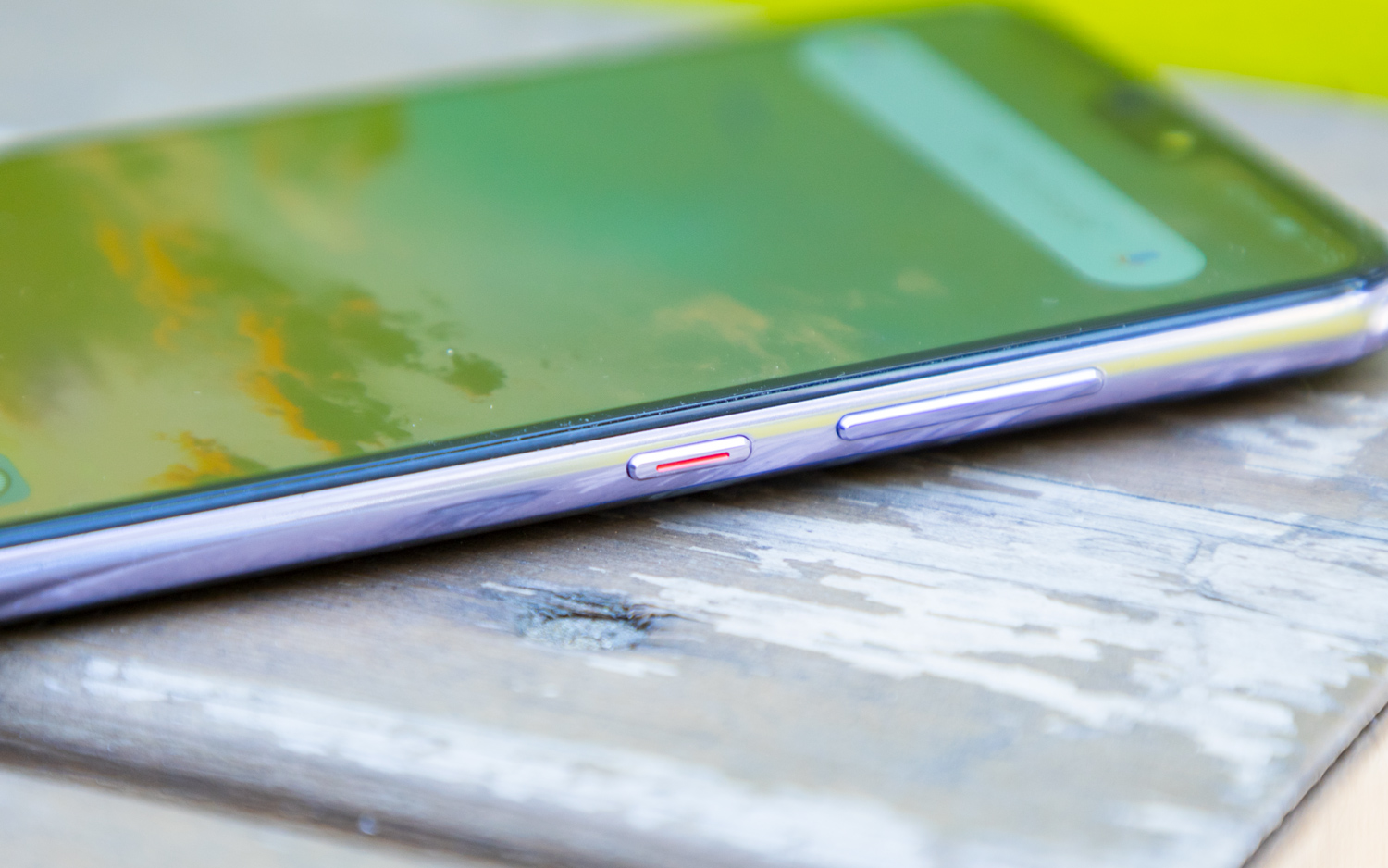
Still, there are some pleasing little touches, like the power button with its orange accent, or the Huawei logotype and Leica branding that sit vertically in line with the three cameras and flash. These elements lend a flair of quality and craftsmanship not unlike the cameras produced by the esteemed Leica.
Display: A good, not great OLED panel
Measuring 6.1 inches with a resolution of 2240 x 1080, the P20 Pro's OLED screen is sharp, but not quite as sharp as others in the segment.
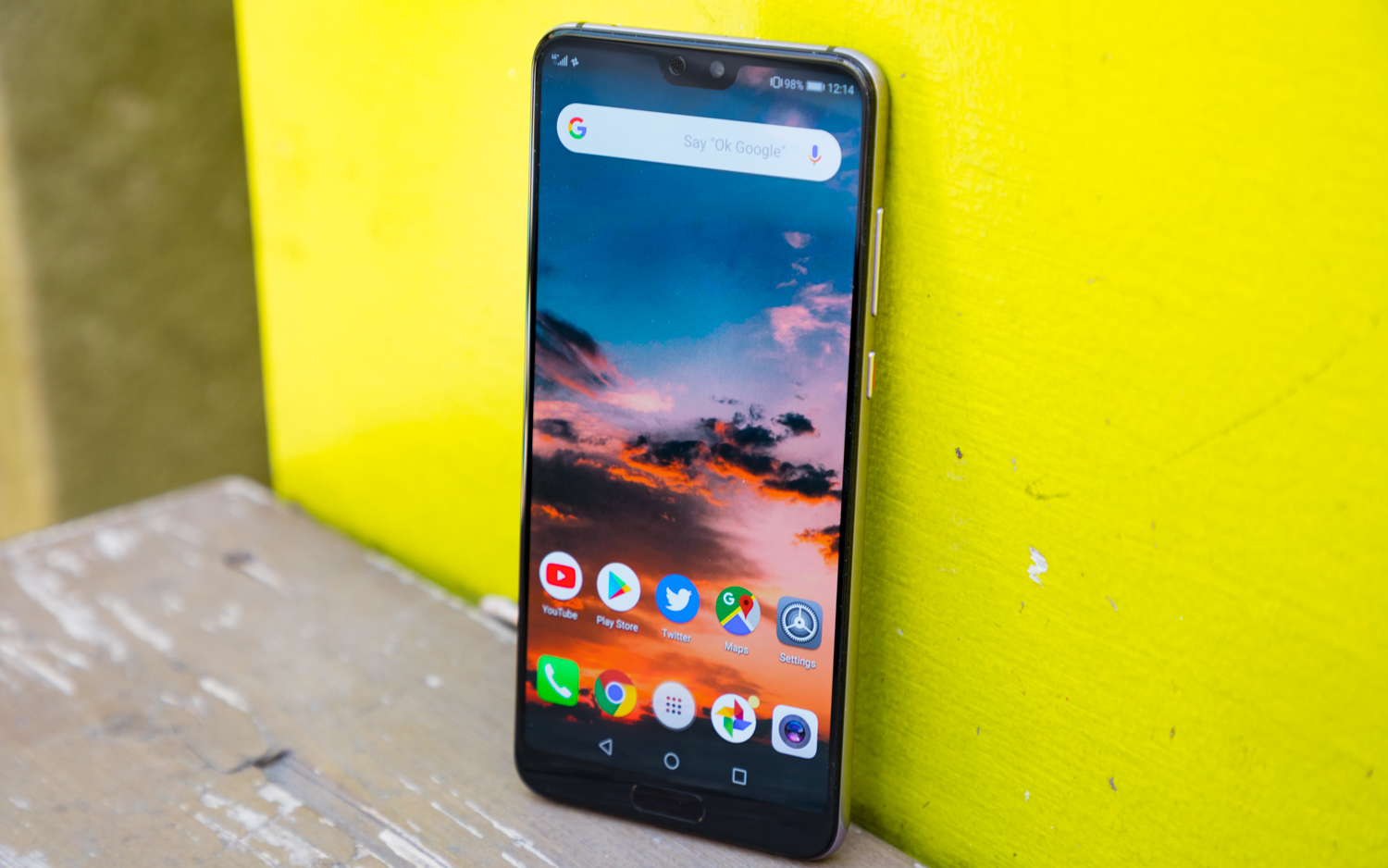
If you look closely, it's easier to discern individual pixels than on the iPhone X or either model of Samsung's Galaxy S9. Huawei's handset also comes up short regarding peak full-screen brightness, topping out at 461 nits, compared with the 574-nit iPhone X and the 620-nit Galaxy S9+.
Considering how expensive the P20 Pro is, the display is not as impressive as it probably should be.
Truthfully though, you'd only notice these setbacks looking at the P20 Pro side by side with one of its rivals. The P20 Pro re-created 132.1 percent of the sRGB color space using its Normal color mode, which is adequate for a phone with a more realistic display profile. (For reference, the iPhone X, which also favors less saturated hues, measured 128.6 percent.) The P20 Pro's Delta-E color accuracy rating of 1.11 was fair as well, though the iPhone X surpasses it at 0.27. (Numbers closer to 0 are better.)
Those who prefer colors that pop will be pleased to know there's an optional Vivid display mode lurking in the settings. Ultimately, Huawei has gifted the P20 Pro with a fine panel, but considering how expensive the device is, the screen isn't as impressive as it probably should be.
Camera: Legendary in low light
The P20 Pro would be an otherwise ordinary handset, if not for its triple lenses — a world's first for smartphones.
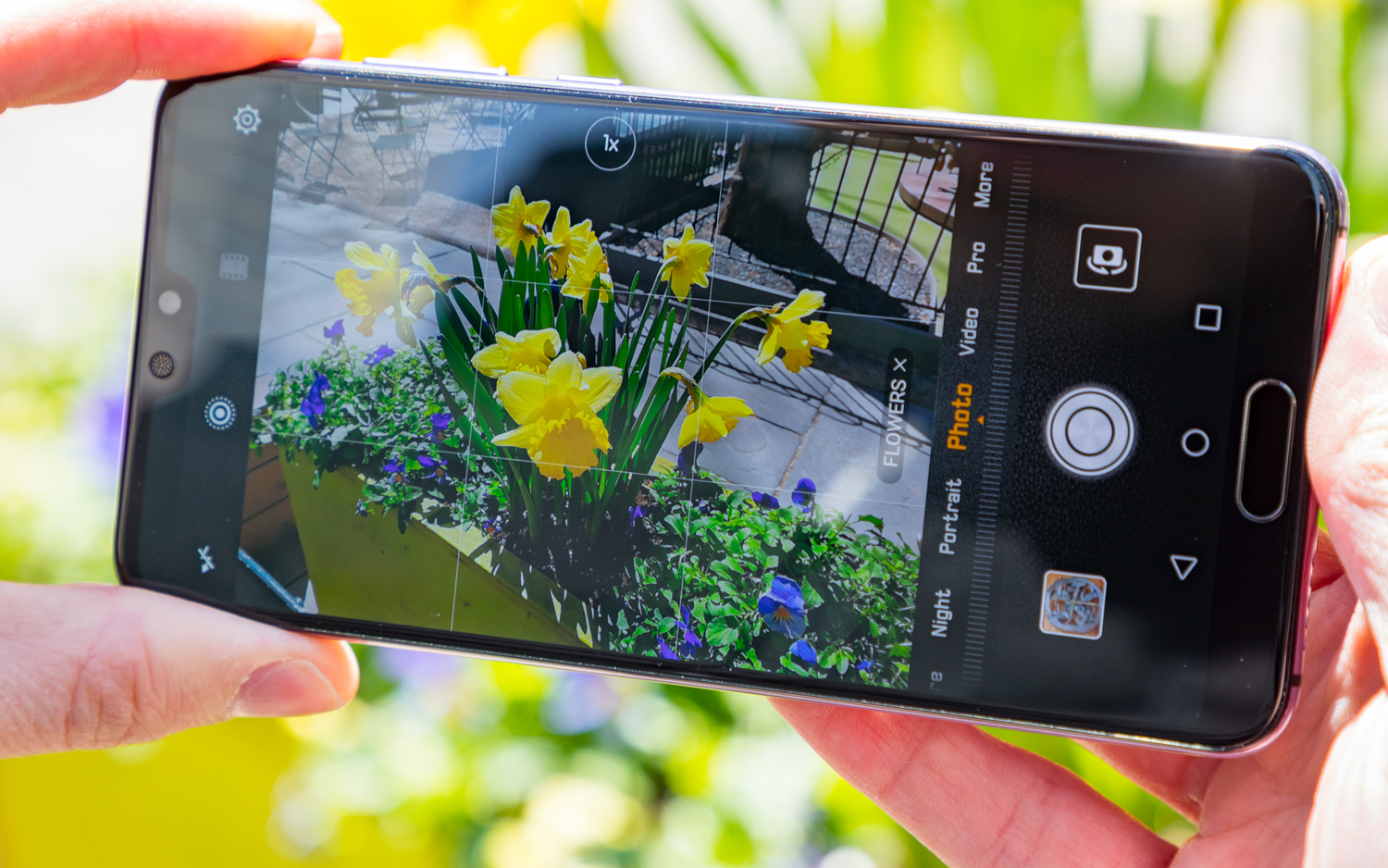
The primary camera is rated at a whopping 40 megapixels, but Huawei also increased the size of the image sensor so that it's significantly larger than what's inside Apple, Google and Samsung's flagships.
MORE: The Huawei P20 Pro's Camera Beats the iPhone X, Pixel 2 XL
That means the P20 Pro can capture super-crisp shots without sacrificing light — a common problem with high megapixel counts. It also uses all that extra visual information to bind pixels together, producing a 10-MP image with less visual noise and better color accuracy than you'd otherwise have.
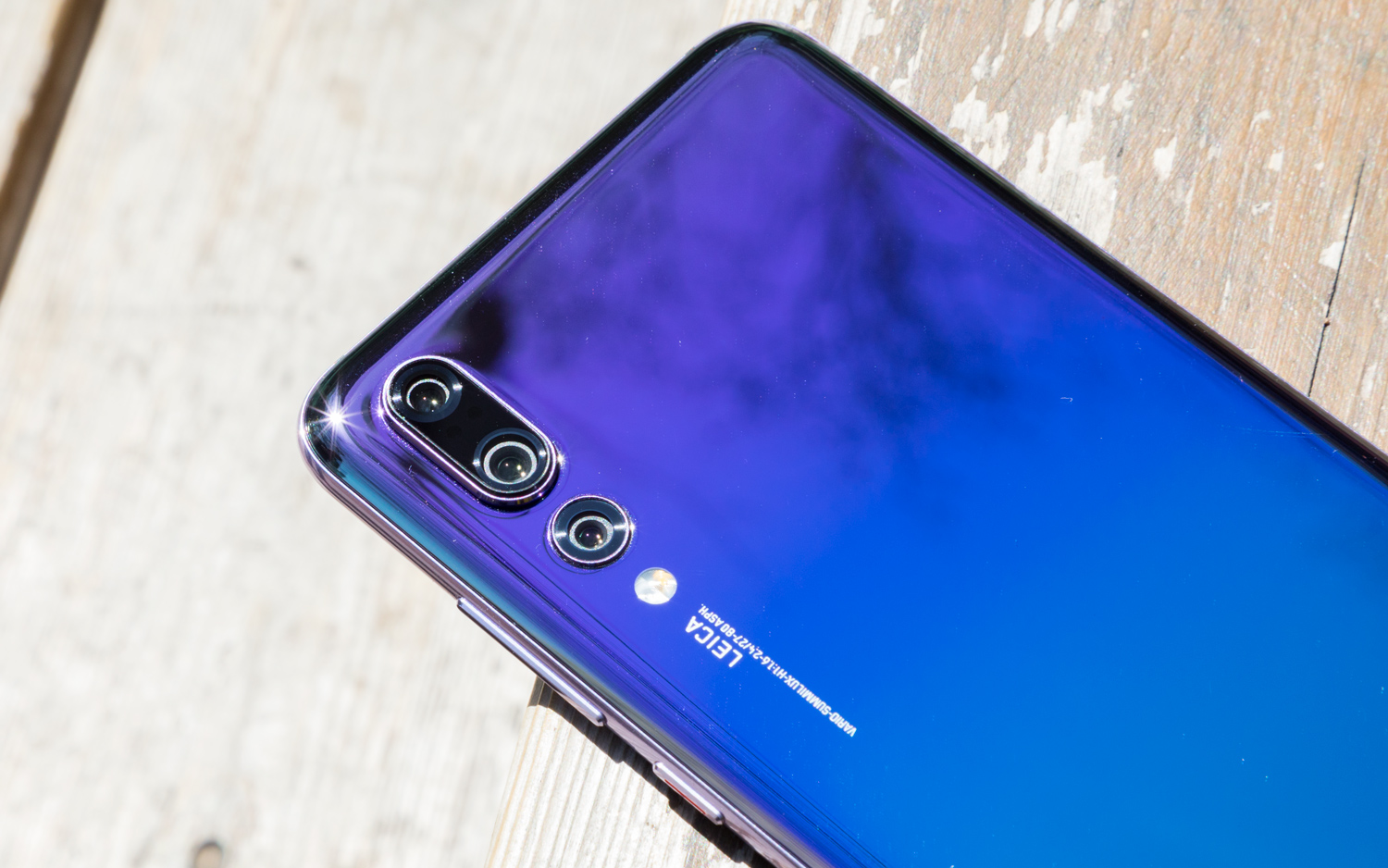
The other two cameras aid the main sensor, depending on the scenario. The 20-MP monochrome lens concentrates on luminosity, because it doesn't need to record color. That, coupled with its extra-wide f/1.6 aperture, helps improve low-light shots. The third camera on the P20 Pro is an 8-MP telephoto with a longer focal length, well-suited for Portrait Mode. It's also the camera used for 3x optical zoom.
The P20 Pro delivers the best low-light photography we've ever witnessed from a smartphone.
The upshot of all of this is that the P20 Pro has the hardware to support anything you could possibly want to shoot. But hardware only tells half the story, because Huawei has coupled innovative software with the P20 Pro's trio of lenses.
There's Master AI — an iteration upon software Huawei first implemented in the Mate 10 Pro, that changes exposure parameters to match scenes and objects the onboard neural processor recognizes. But the P20 Pro's greatest imaging breakthrough comes courtesy of its AI Stabilization and Night Mode — two systems that work in concert to consistently deliver the best low-light photography we've ever witnessed from a smartphone.
Because longer exposures allow more light to reach the sensor, Night Mode keeps the shutter open for a full 4 seconds. Here's the kicker though: You don't need a tripod. AI Stabilization is astonishingly better at eliminating hand shake than it has any right to be.
Night Mode only falters with moving objects — something visible in the above scene, where the building at the center of the frame is adequately exposed with good detail and color, but the trees swaying in the wind have been lumped together into a smeary pastiche with the sky.
In daylight, the P20 Pro is decidedly less impressive. Up against the Galaxy S9+, Huawei's telephoto lens rendered its portrait of my colleague Jorge with more precision at the expense of washed out hues. Interestingly, using the telephoto for Portrait Mode eliminated the background bokeh effect — meaning if you want that shallow depth-of-field look, you'll have to rely on the standard zoom lens, which employs a much less flattering wide perspective.
This shot of a flower illustrates how Huawei's Master AI can sometimes take "smart" processing too far. The P20 Pro has a penchant for oversharpening and cool colors. In most cases, the software compensates for that by dialing up the saturation, as it tends to with nature scenes. But that inevitably leads to the opposite issue — photos that look fake and obviously shopped, that are almost grotesquely vivid.
Up front, there's one more camera above the P20 Pro's display: a 24-MP shooter with an f/2.0 aperture. All those extra pixels certainly make for sharper selfies on Huawei's device, especially when compared with Samsung's 8-MP front-facing unit. The colors could be a bit punchier, however.
Performance: Almost as good as it gets
Instead of using Qualcomm's Snapdragon processors as other top Android phones do, Huawei builds its own chipsets for its mobile devices. The Kirin 970 inside the P20 Pro is about on a par with last year's Snapdragon 835, but the newer 845 chip inside the Galaxy S9 outpaces it.
In Geekbench 4, a benchmarking app that measures overall performance, the P20 Pro's 6,240 score was trounced by the Galaxy S9+ at 8,295. A similar story played out in 3D Mark's Sling Shot Extreme OpenGL ES 3.1 graphics test, where Huawei's device mustered only 2,991, compared with 4,634 from Samsung's handset.
MORE: Best Smartphones on the Market Now
Those numbers might seem like quite the indictment for what is ostensibly supposed to be a flagship product that costs as much as competing phones with newer, faster silicon. However, they don't tell the whole story.
The P20 Pro is fitted with 6GB of RAM, just like the Galaxy S9+, Note 8 and the now-discontinued OnePlus 5T. Coupled with the still-capable Kirin 970, that's more than enough computational headroom for multitasking and games. Huawei's customers also get the benefit of the Kirin 970's dedicated AI subprocessor, which enables the aforementioned camera recognition and intelligent filters.
Playing the mobile version of PlayerUnknown's Battlegrounds on the P20 Pro and Galaxy S9+ was a mostly equal experience, save for a very slight frame rate advantage in Samsung's favor. It didn't benefit my performance, however — I totaled just two kills on both devices, and the P20 Pro’s hiccups were infrequent and didn't hinder the experience.
Battery: Huawei does it again
Packed with a 4,000-mAh battery that puts most competing devices to shame, our P20 Pro turned in 14 hours and 13 minutes streaming web pages on T-Mobile LTE before shutting down. That's not far off Huawei's other flagship, the Mate 10 Pro, which clocked 14 hours and 39 minutes in the same test.
No flagship from any other phone maker matches the P20 Pro's longevity.
That result places the P20 Pro comfortably above the longest-lasting products in its class, including the Pixel 2 XL at 12:09, the iPhone 8 Plus at 11:16 and the Galaxy S9+ at 10:59.
MORE: Smartphones with the Longest Battery Life
No flagship from any other phone maker matches the longevity of either of Huawei's offerings. That feat not only speaks to the efficiency of the Kirin 970 chipset, but Huawei's ability to cram massive batteries into handsets that are no thicker than its rivals.
Because of the P20 Pro's lack of U.S. availability, we relied on the same adapter Huawei packs with the American version of the Mate 10 Pro to test the P20 Pro's charging speed. Both devices employ identical chipsets, support the company's exclusive SuperCharge protocol and even have the same capacity, so we weren't surprised to find the results align. The P20 Pro reached 57 and 91 percent after 30 and 60 minutes, respectively, while the Mate 10 Pro made it to 60 percent in 30 minutes.
Software: Latest, but not the greatest
If you're paying the equivalent of $1,100, you shouldn't have to settle for last year's version of Android. Thankfully, Huawei agrees, which is why the P20 Pro is one of a chosen few devices — including the aforementioned Mate 10 Pro — to support Oreo 8.1.
That means you can expect all the trappings of Oreo — picture-in-picture mode, notification dots, expanded Autofill support for forms and the like — coated in Huawei's characteristic EMUI interface.
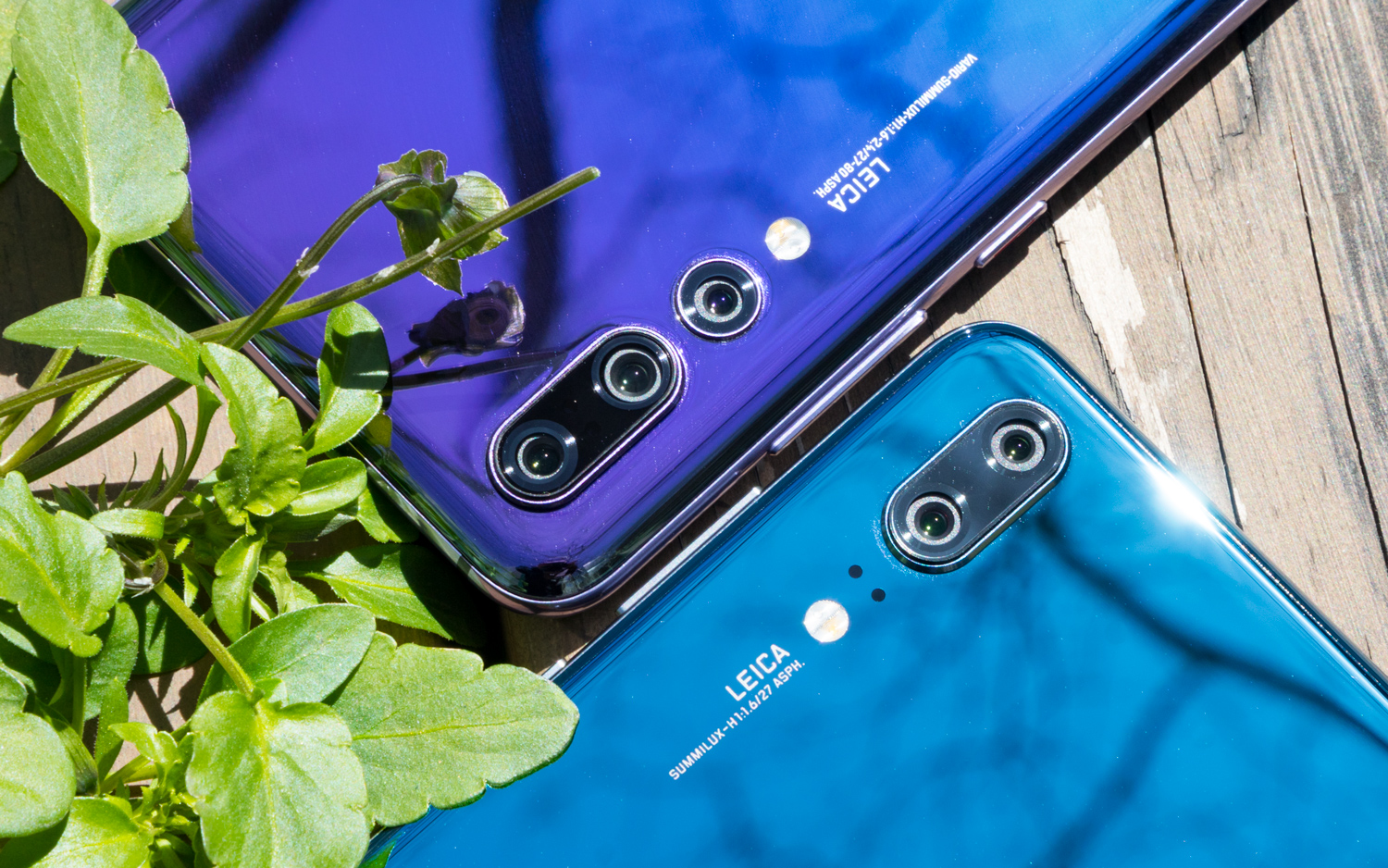
I've spoken at length about EMUI in reviews of Huawei and Honor's products in the past, and there's nothing in the P20 Pro's repertoire that makes me reassess my unfavorable opinion.
EMUI is one of the most aggressive re-skins of Android you'll find from any manufacturer. Everything — from the way settings are organized, to the use of SwiftKey as the stock keyboard, to the lack of an app drawer on the default configuration of the home launcher — behaves at least a little differently compared with other devices. Some users will roll with the changes, while others will surely call for a simpler experience closer to Google's vision for the platform.
For what it's worth, EMUI provides features you won't find in the Pixel 2, like Private Space, which allows users to create a secret secondary profile on their device linked to an alternate fingerprint. But it's wrapped in a graphic style that evokes iOS knockoffs from five years ago, that feels plainly at odds with Huawei's modern industrial design and innovative camera technology.
Bottom Line
Huawei set out to build the best smartphone camera in the world with the P20 Pro. And while the company didn't completely succeed, it managed a solution to a problem that has dogged the likes of Apple, Google and Samsung for the better part of a decade: taking photos in the dark.
On that basis alone, the P20 Pro is a special product that finally classifies Huawei as an innovator, rather than just another company that also makes decent phones. But low-light photography is merely one facet among a host of considerations customers make when they buy a phone. In those other respects, the P20 Pro is good, but not great.
MORE: Android Tips to Unlock Your Phone's Full Potential
And then there's the availability dilemma. If the P20 Pro was sold in the States, I wouldn't hesitate to recommend it to those looking for a quirky alternative to the status quo. However, upward of a grand is a hefty sum to plunk down on a high-end handset with no guarantee that it will connect to the LTE networks where you live, and no warranty if something goes wrong.
The P20 Pro's price seems especially steep when you look at the competition. The Galaxy S9 and iPhone X grant faster performance and prettier displays, while the Pixel 2 brings a camera that is better than Huawei's in most situations, not to mention a truly modern Android experience. Worse yet for Huawei, all those phones start considerably cheaper, too.
If you have your heart set on the P20 Pro, you won't be disappointed. For everyone else on this side of the Atlantic, though, the benefits simply don't outweigh the risks.
Credit: Shaun Lucas/Tom's Guide
Adam Ismail is a staff writer at Jalopnik and previously worked on Tom's Guide covering smartphones, car tech and gaming. His love for all things mobile began with the original Motorola Droid; since then he’s owned a variety of Android and iOS-powered handsets, refusing to stay loyal to one platform. His work has also appeared on Digital Trends and GTPlanet. When he’s not fiddling with the latest devices, he’s at an indie pop show, recording a podcast or playing Sega Dreamcast.
-
WOOTSK87 The reviewer is either biased or lacking knowledge in photography. The p20 is obviously capturing more details and a wider sensor latitude. An example is the face shot which has blown out areas unable to be captured by others. The details is much lower in the S9+. Better camera is able to capture more details and raw photos will look more flatter to have more details capture with lesser contract. The photographer or internal software in the DSLR enhance the contrast. Also, not available is US is more of a political issue than one suppose to put in tech review, it feels like the reviewer has no more substance to reduce the phone rating.Reply
